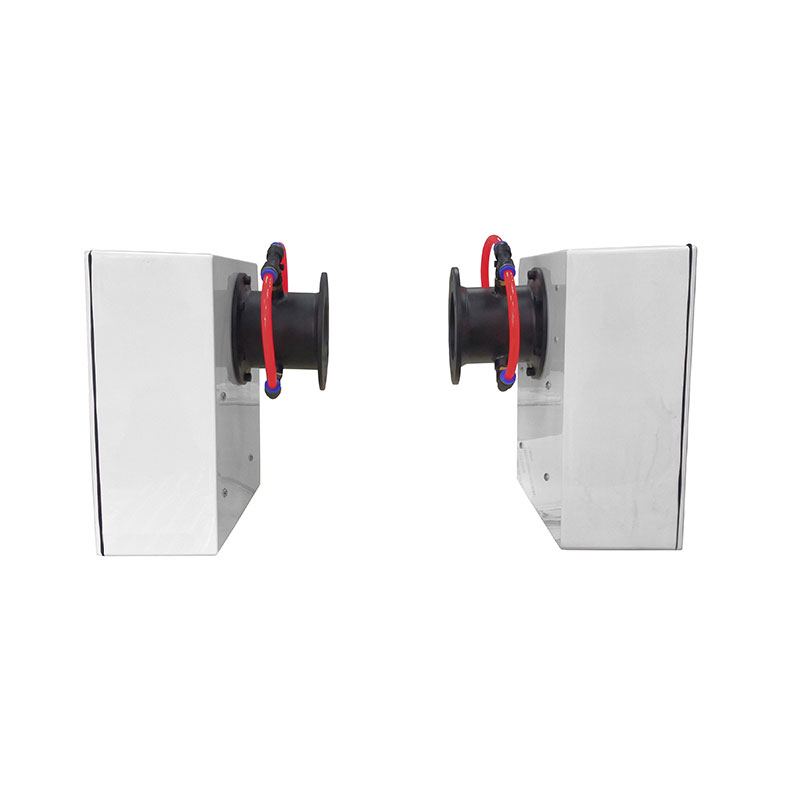Shandong Fengtu IOT Technology Co., Ltd
Sales Manager:Ms. Emily Wang
Cel,Whatsapp,Wechat:+86 15898932201
Email:info@fengtutec.com
Add:No. 155 Optoelectronic Industry Accelerator, Gaoxin District, Weifang, Shandong, China

Sales Manager:Ms. Emily Wang
Cel,Whatsapp,Wechat:+86 15898932201
Email:info@fengtutec.com
Add:No. 155 Optoelectronic Industry Accelerator, Gaoxin District, Weifang, Shandong, China

Model:FT-YGT1
Brand:fengtu
1.Flue dust transmittance detector measurement principle
Flue dust transmittance detector A device used to measure the light transmittance and dust concentration of the environment and pipes.The detection light crosses the flue, and the single optical path measurement system consists of two parts: the transmitter and the receiver. A high-brightness LED light source is installed in the transmitter, which emits a light beam through the diffuser and then through the flue, projecting it onto the focusing lens in the receiver and focusing it on the measuring detector; the other part is directly focused on the reference detector. By calculating the ratio of the signal intensity obtained on the two detectors, the light transmittance or light opacity value can be obtained, from which the light transmittance (or light opacity) and dust concentration value can be obtained.
2. Main features of Flue dust transmittance detector
Direct continuous measurement
Small size, light weight, compact structure
Directly display light transmittance or opacity
With lens contamination monitoring and compensation device
Automatic calibration and manual calibration, convenient and flexible
Measuring path 0.5-5 meters
With air purge passage
Long life LED signal light source
No moving parts - low maintenance
Easy installation and debugging
3. Flue dust transmittance detector technical parameters
| How it works | Crossing the flue, single light path transmission |
| light source | High brightness LED |
| Response time | 3 seconds to reach 98% of the final value |
| Measuring range | Light transmittance 0-99.99% |
| Resolution | 0.01% |
| Detectable gas | Smoke, fumes or related dusty gases |
| Optical path length | 0.3-2m standard (other lengths can be customized) |
| Average time | 1-59 seconds |
| Calibration and calibration | Manual calibration and calibration (with calibrator) |
| show | LCD display |
| Analog Output | 4-20mA current loop |
| Digital Output | RS485/232 |
| Relay output | Two-way switch output (alarm value setting) |
| Operating temperature | -20-50°C |
| Operating humidity | 0-99% (non-condensing) |
| Supply voltage | 220VAC; optional 12, 24VDC |
| Power consumption | Maximum transceiver system 18W |
| vibration | 2Hz-60Hz, maximum amplitude 2mm |
| Housing Material | Die-cast aluminum |
| Protection level | IP67 |
Measuring wind direction is important for predicting the weather, guiding aviation and marine navigation, tracking environmental pollution, planning agricultural activities, optimising sporting events and harnessing wind power for electricity generation. Understanding wind direction helps us to bett...
Particulate matter is a key factor affecting air quality, and precise monitoring contributes to environmental protection. Particulate Monitors, especially those with PM2.5/PM10/TSP three-channel output functions, are becoming common tools in the field of environmental monitoring.Such monitoring equi...
In the report of the Twentieth National Congress, "modernisation in which human beings live in harmony with nature" was elevated to an important connotation of Chinese-style modernisation. In the new era, China's ecological civilisation is faced with the challenge of addressing climate...
A meteorological and environmental monitoring system is an integrated system of equipment and software for monitoring and recording changes in atmospheric and environmental parameters. It monitors and records data on meteorological elements, environmental pollutants, etc. in real time for meteorolog...